Gold prices just lower; monthly gains on track
Introduction & Market Context
The Trade Desk (NASDAQ:TTD) recently presented its Q1 2025 investor presentation, highlighting continued growth despite a challenging Q4 2024 that saw the company miss revenue expectations for the first time in eight years. The ad tech firm reported Q1 2025 revenue growth of 25% year-over-year, as it works to recover from what executives described as "minor execution missteps" in the previous quarter.
The company’s stock has shown signs of recovery, trading at $68.08 in after-hours trading on May 8, up 13.66% from the previous close of $56.46, after experiencing a dramatic 27.28% drop following its Q4 earnings release.
Financial Performance Highlights
The Trade Desk has maintained an impressive growth trajectory over the past decade, with revenue increasing from $114 million in 2015 to $2.45 billion in 2024, representing a 26% year-over-year increase from 2023. The company’s gross advertising spend reached $12.04 billion in 2024, also up 26% from the previous year.
As shown in the following chart of TTD’s revenue and gross spend growth:
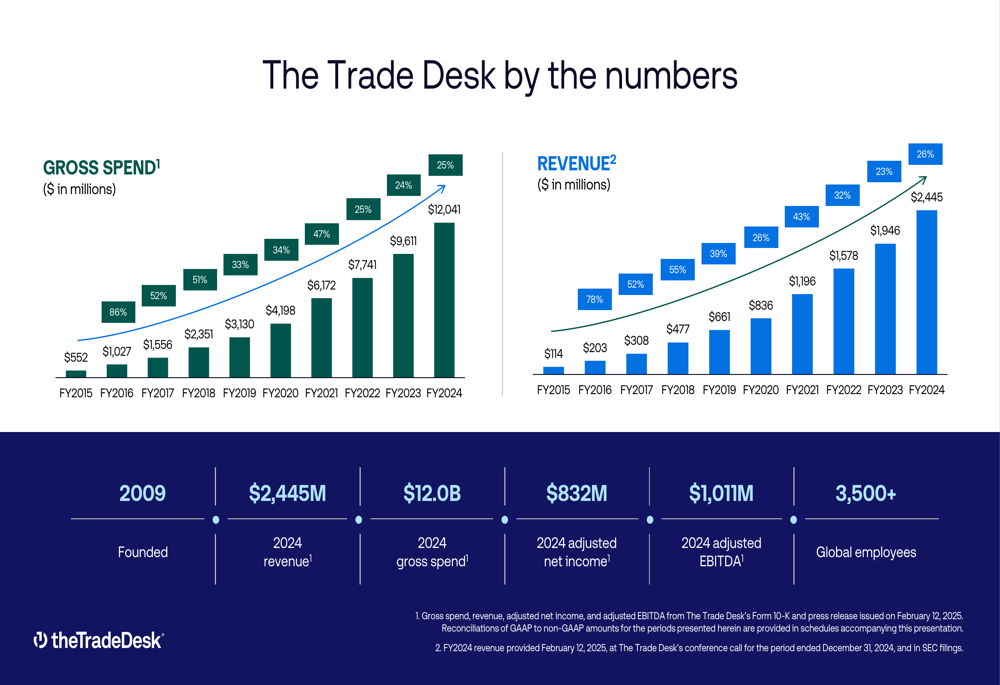
The company has also demonstrated strong profitability, with 2024 adjusted net income of $832 million and adjusted EBITDA of $1.01 billion. This financial performance reflects TTD’s ability to maintain high margins while scaling its business, despite the recent Q4 revenue miss.
The following timeline illustrates TTD’s journey to profitability since 2013, showing key milestones in the company’s growth:
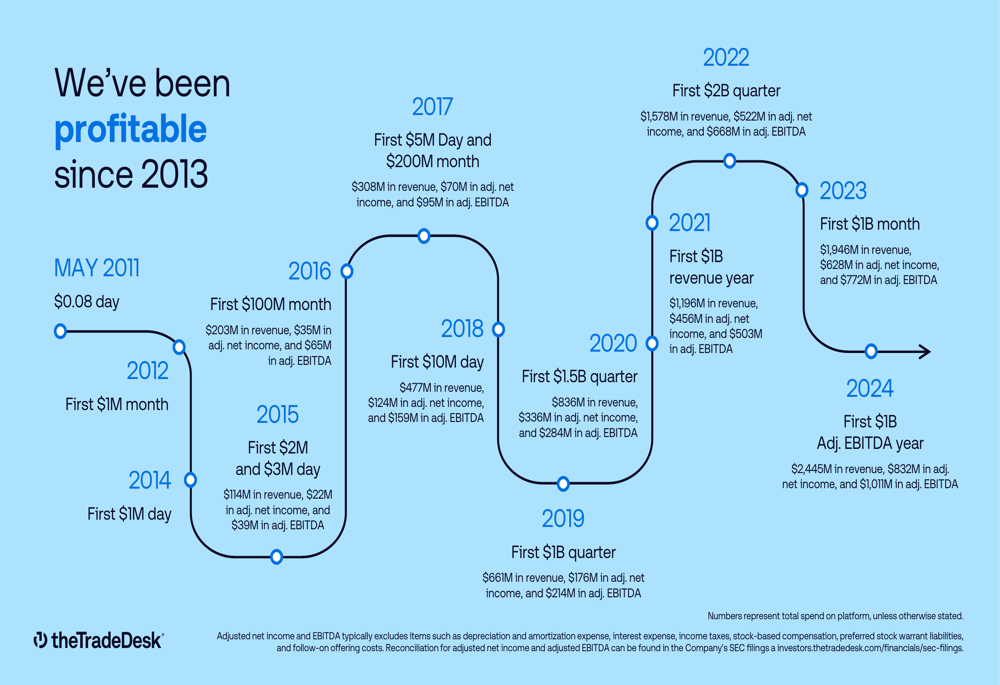
For Q1 2025, TTD has set revenue guidance of at least $575 million, projecting 17% year-over-year growth. While this represents a slowdown from the 26% growth achieved in 2024, it still indicates continued expansion in a competitive market.
Strategic Growth Drivers
The Trade Desk has identified several key growth drivers, with Connected TV (CTV) representing the largest and fastest-growing channel. The company’s CTV reach extends to over 90 million households and 120 million CTV devices, positioning TTD to capitalize on the shift from traditional linear TV to streaming platforms.
The company’s reach in the CTV space is illustrated in this graphic:
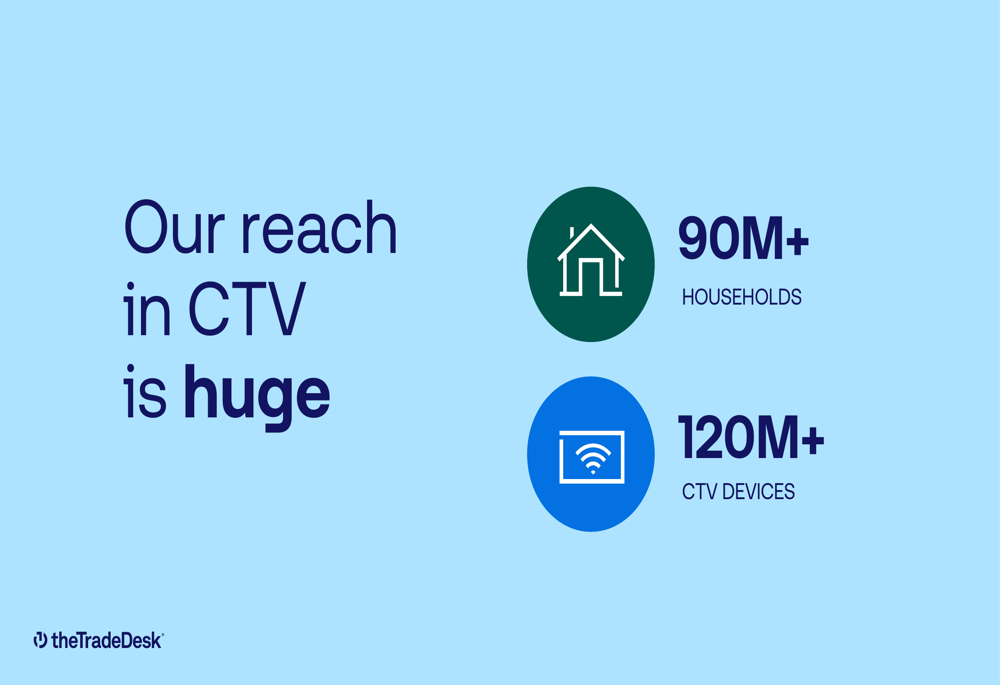
International expansion represents another significant opportunity, with TTD currently generating only about 12% of its spend internationally, despite 60% of global ad dollars being spent outside North America. This disparity suggests substantial room for growth as the company expands its global footprint.
The global advertising market opportunity is visualized in this chart:
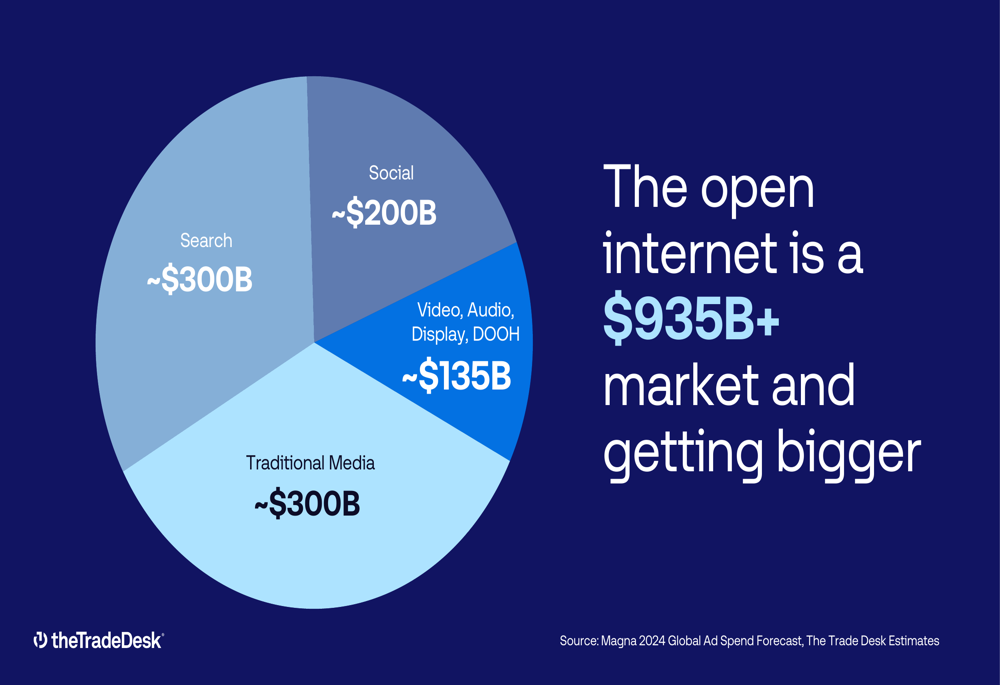
Shopper marketing has emerged as another key focus area, with TTD leveraging retail data from partners including Walmart (NYSE:WMT), Albertsons (NYSE:ACI), Target (NYSE:TGT), and others to enhance targeting capabilities. The company positions this retail data as "deterministic and future-proof," providing valuable insights for marketers looking to increase market share.
Competitive Industry Position
The Trade Desk positions itself as an independent alternative to what it calls "conflicted platform providers" – likely referring to walled gardens like Google (NASDAQ:GOOGL) and Meta (NASDAQ:META). The company emphasizes its role as an enabler for agencies rather than a disruptor, creating "room for their proprietary advantages."
TTD’s platform serves as a demand-side platform (DSP) that enables advertisers to buy digital advertising inventory across various channels, including display, video, audio, and connected TV. The company’s approach focuses on transparency, objectivity, and data-driven decision-making.
The company’s investment highlights are summarized in this slide:
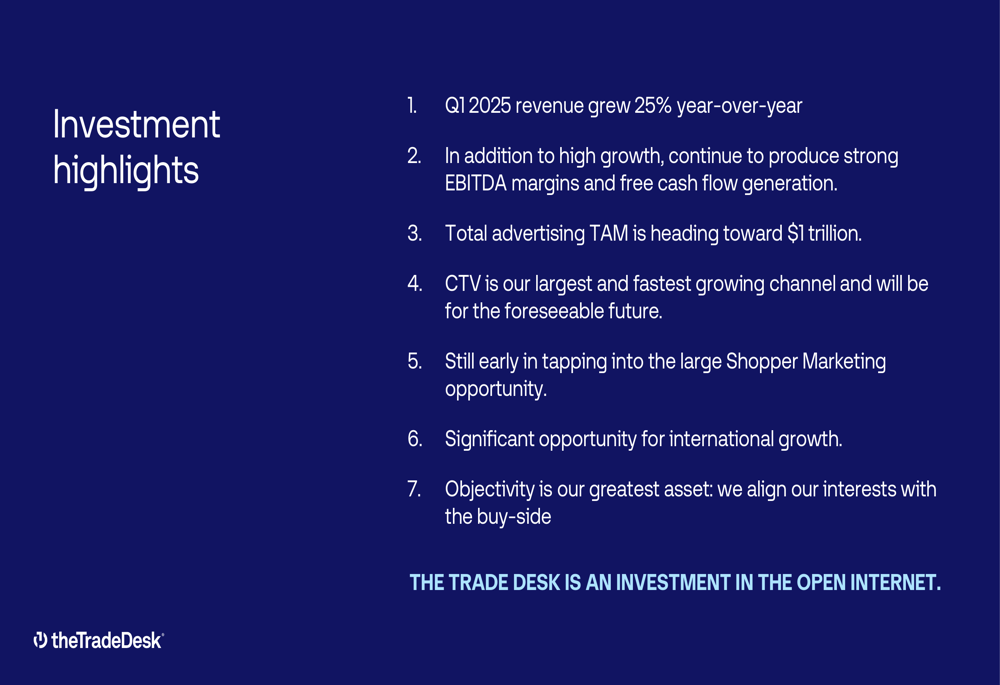
A key initiative in TTD’s competitive strategy is Unified ID 2.0, an open-source identity solution designed to replace third-party cookies while maintaining privacy. This initiative aims to provide a "better foundation for identity" across the open internet.
Forward-Looking Statements
Despite the recent Q4 revenue miss, TTD maintains an optimistic outlook for 2025 and beyond. The company plans to complete the transition of all clients to its Kokai platform in 2025, which should enhance capabilities and efficiency.
The Trade Desk expects to continue producing strong EBITDA margins and free cash flow generation, building on the over $630 million in free cash flow generated in 2024. However, the company has acknowledged that it anticipates some margin deleverage as it invests in infrastructure and talent.
The company’s revenue growth trajectory is visualized in this chart:

While TTD faces challenges including intense competition from tech giants and potential market saturation as digital advertising matures, the company remains confident in its ability to capitalize on the growing digital advertising market, particularly in CTV, international markets, and shopper marketing.
CEO Jeff Green highlighted the company’s record-breaking performance in 2024, noting that " Total (EPA:TTEF) spend on our platform exceeded $12 billion, the highest in our history," while acknowledging the need for recalibration efforts following the Q4 execution issues.
As The Trade Desk continues to navigate the evolving digital advertising landscape, its focus on the open internet, data-driven decision-making, and strategic growth initiatives positions it to potentially recover from recent setbacks and maintain its growth trajectory in 2025 and beyond.
Full presentation:
This article was generated with the support of AI and reviewed by an editor. For more information see our T&C.
